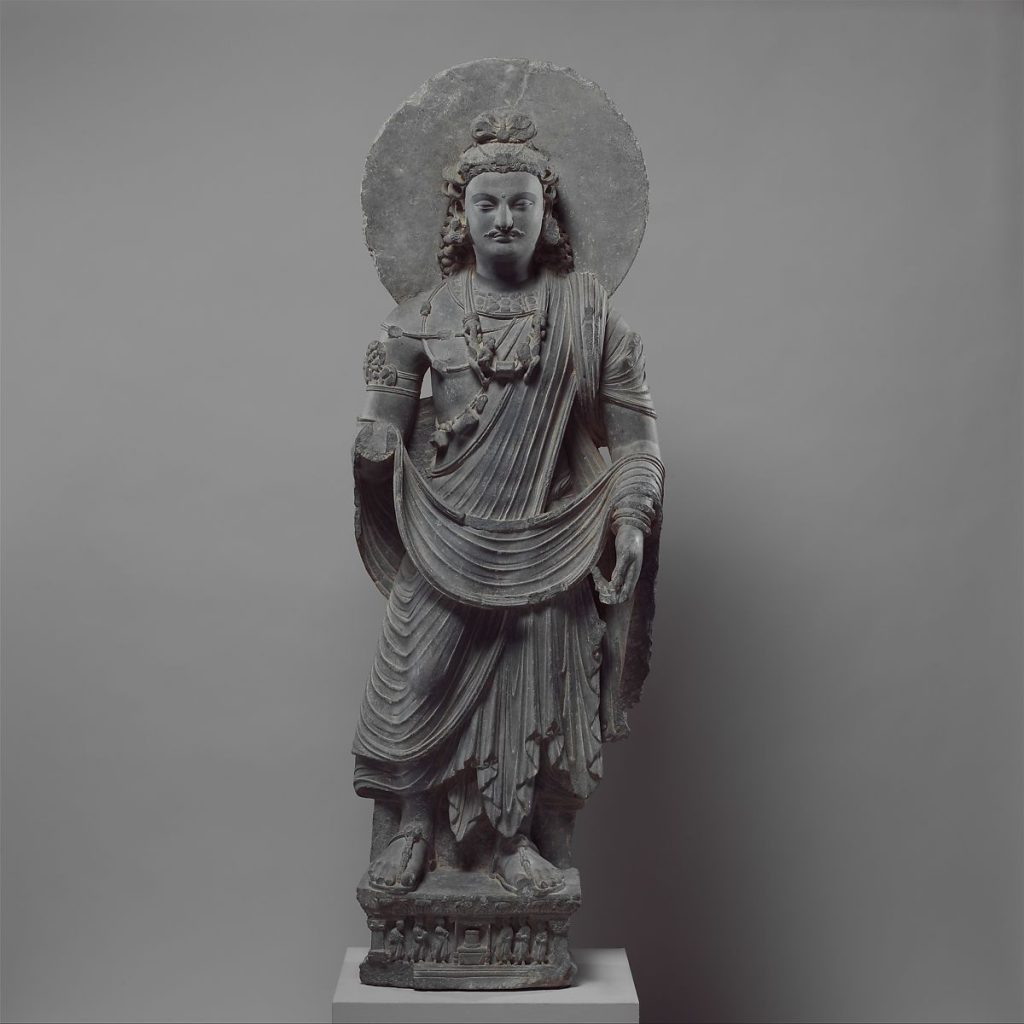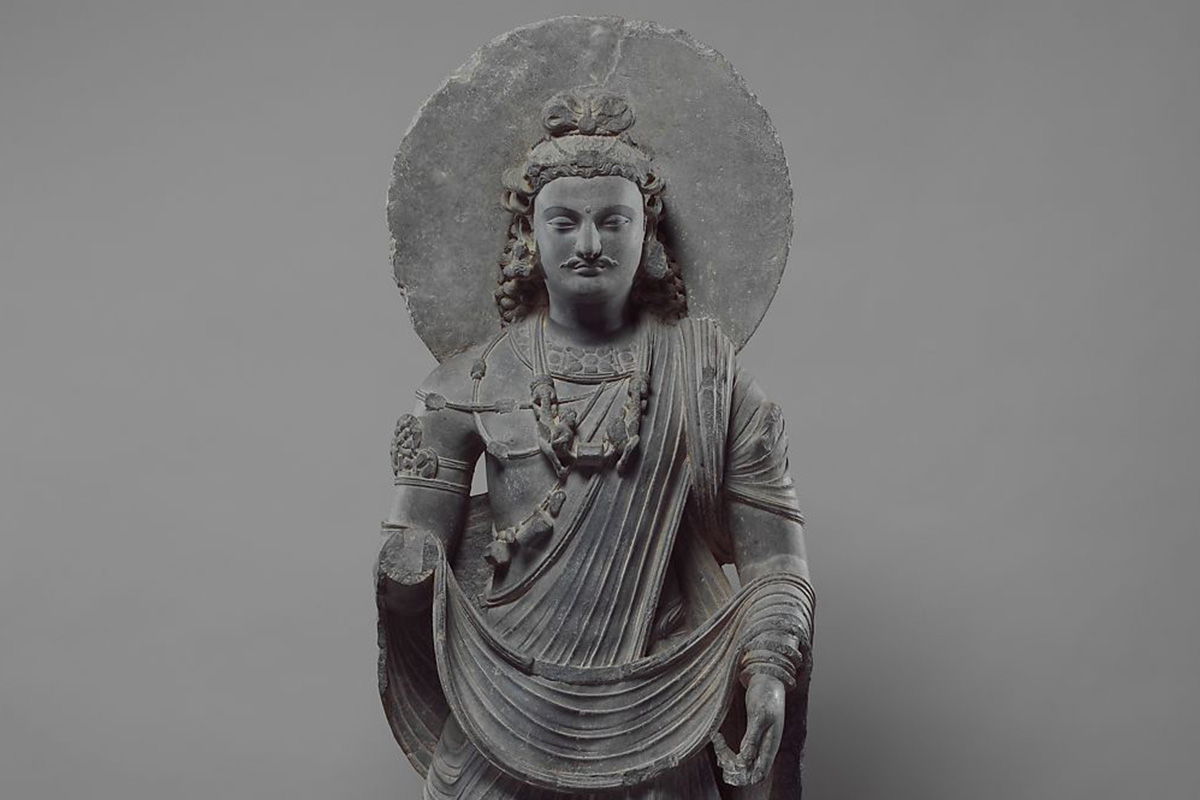Standing Bodhisattva Maitreya (Buddha Of The Future)
Original Location:
- Gandhāra, the region is near the present day Peshawar in Pakistan.
- CA. 3rd Century
Permanent Location:
- Metropolitan Museum of Arts, New York
- Gallery 235
They are several artworks representing Maitreya in The Met's collection of Asian art. This particular collection counts more than 35,000 objects.
The Medium:
- Gray Schist
The sculpture is carved from grey metamorphic rock referred to as blue or gray "schist". This type of rock is like basalt with a preponderance of lamellar minerals like mica or chlorite and would be found in the Swat valley. It is the mica which gives certain schist sculptures their glitter or sparkle.
The Subject:
In the Greco-Buddhist art of Gandhara, Maitreya was the most popular figure represented along with Buddha Śākyamuni. Buddhist imagery influenced by the classical Greek and Hellenistic styles traveled to China. Later, it also reached Korea and Japan.
This piece stands out to me because Maitreya appears very naturalistic. His posture is dignified and he emanates compassion. Actually, in Sanskrit the word maitrī means "friendship" which derived from the noun mitra "friend".
His hairstyle is reminiscent of Hellenistic sculptures as well as representations of Apollo. He is wearing a monastic robe covering both shoulders and arranged in heavy classical folds, like a Greek Chiton or a Roman toga. Maitreya is usually identified by the lip of the sacred water flask in his left hand and by his loop topknot.
His body has interesting proportions, almost equal halves, making his upper body part appear emphasized. It gives an impression of power. He also has a godly halo around his head.
Prophecy:
Bodhisattvas are enlightened beings who postpone their own salvation to save all Sentient Beings. Maitreya is the Buddha of the future, once the current cosmic era has destroyed itself, he will be reborn as the teaching Buddha of the next great era. According to a documented prophecy of Liu Chi in China's Ming Dynasty about the coming of Maitreya:
“When the future spiritual Lord descends into this world, he will not assume the figure of a royal court dignitary; nor will he care to be a prince. Staying away from the Buddhist temples and Taoist monasteries, he is instead born into an indigent family. He travels extensively around the "Northern Zhao and Southern Yan", and scatters the gold all along his way.”
For additional context here are the resources and articles I had open to write this post:
- How Gandhara art grew out of an encounter between India and Greece
- Gray Gandharan Schist Bodhisatva Buddha Bust 3rd Century A.D.
- Gandharan Sculpture


No Comments.